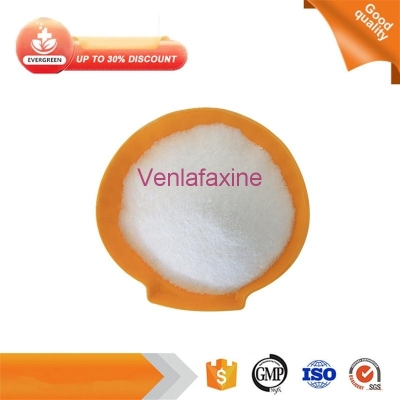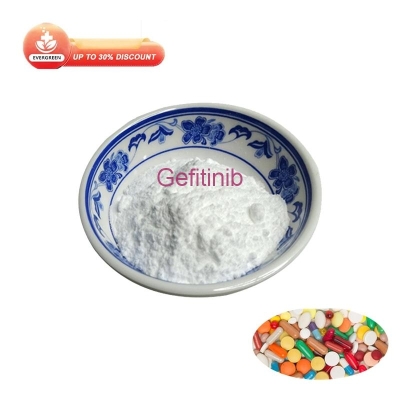MHSPC patients appear progress, decisive drug change after the disease control is good! Classic cases.
-
Last Update: 2020-07-17
-
Source: Internet
-
Author: User
Search more information of high quality chemicals, good prices and reliable suppliers, visit
www.echemi.com
The original study of abitelone is a better treatment option for patients with high-risk mhspc.case list ■ a 61 year old male patient with dysuria for 2 years and aggravation for 1 month was treated on March 20, 2019.denied family history of prostate cancer.■ physical examination results: digital rectal examination showed that the prostate was enlarged and tough, the surface was not smooth, the central sulcus disappeared, mild tenderness, and a 1.2cm × 0.8cm induration could be touched in the right lobe of prostate.laboratory test: serum total prostate specific antigen (t-PSA) was 41.9ng/ml.imaging examination: prostate MRI plain scan + diffusion imaging showed abnormal signal in the right and left peripheral zone of prostate peripheral zone at 5 ~ 6 points, considering prostate cancer; whole body bone scan showed that bone metabolism of left anterior 4th and 6th rib near axillary segment, right posterior 8th rib, left margin of T3 vertebral body was active, combined with SPECT / CT, metastasis was considered; the rest had no obvious abnormality.pathological examination: a further transrectal prostate biopsy guided by B-ultrasound under local anesthesia was performed. The biopsy showed prostate adenocarcinoma (Gleason score on the left side: 4 + 4 = 8 points, Gleason score on the right side: 4 + 5 = 9 points).■ preliminary diagnosis of metastatic hormone sensitive prostate cancer (mhspc).■ after the diagnosis of the patients was confirmed, the maximum androgen blocking therapy (mAb regimen, bicalutamide + goserelin) was recommended according to the guidelines. The t-PSA was 0.19ng/ml after 1 month (April 2019), 0.16ng/ml after two months (may 2019), and 0.21ng/ml at the follow-up of nearly 3 months (June 2019).whole body bone scan showed that the metastatic foci of the left anterior 4th and 6th rib were smaller than those of the anterior, and the metabolism of the right posterior 8th rib, T3 vertebral body and left marginal bone was basically the same as that of the former, and the metabolism of the left pubic bone was active, so the metastasis should be considered.because the patient met the diagnosis of high-risk mhspc, the treatment plan was changed to androgen deprivation therapy (ADT therapy, goserelin) combined with the original research of abiterone + prednisone (AA + P) scheme, and the gastric mucosa protective agent esomeprazole magnesium enteric coated tablets were added after the patients and their families agreed.the t-PSA fluctuated from 0.03 to 0.17ng/ml during 10 months of follow-up (may 2020). 6 months after the treatment, the whole-body bone scan showed that the T3 vertebral body metastases were smaller than before, the ribs and the left pubic bone metabolic active area disappeared, and no other distant metastasis was found.case analysis: the patient was a middle-aged male. Due to dysuria, a 1.2cm induration was found in the right lobe of the prostate by digital rectal examination, and the serum t-PSA was 41.9ng/ml. Multiple ribs and T3 vertebrae were considered to be metastatic lesions by bone scan, and the diagnosis of mhspc was confirmed by puncture.after diagnosis, the patient's PSA decreased significantly, and the dysuria symptoms were relieved. After nearly 3 months of treatment, the patient's whole body bone scan showed that the metastases near the axillary segment of the left anterior fourth and sixth rib were smaller than those before, and the metabolism of the left marginal bone of the eighth rib and T3 vertebrae was basically the same as that of the former, and the metabolism of the left pubic bone was active.due to the limited clinical benefits of mAb therapy in the treatment of high-risk mhspc, the treatment scheme was changed to ADT + AA + P scheme with the consent of patients and their families, and combined with esomeprazole magnesium enteric coated tablets to protect gastric mucosa.after receiving this regimen, the treatment effect was good, PSA was effectively controlled, the metastatic foci were reduced or reduced, and the quality of life was good.the final analysis of latitude study showed that the median overall survival (OS) of high-risk mhspc treated with AA + P + ADT regimen was 53.3 months, significantly longer than that of placebo + ADT treatment by 16.8 months (Fig. 1).AA + P + ADT therapy had significant survival benefits compared with ADT + placebo in all subgroups, and the secondary end points were also significantly improved.Figure 1 The main results of latitude study: the original research of abitelon has been strongly recommended by various guidelines in recent years: the 2018 European Association of Urology (EAU) guidelines strongly recommend AA + P + ADT for all mhspc patients with the first manifestation of M1; the national comprehensive cancer network (NCCN) guideline of the United States takes this program as a class 1 recommendation for mhspc patients; the American Society of Clinical Oncology (ASCO) guidelines strongly recommend AA + P + ADT for the treatment of mhspc Treatment of high-risk mhspc. Br / > at present, more and more high-risk patients have been approved by the national health insurance administration of China.case provider: Professor Yang Xiaojian, deputy chief physician, associate professor, postgraduate supervisor, deputy director of Urology Department of the First Affiliated Hospital of the Fourth Military Medical University, vice chairman of Xi'an urology branch of Chinese Urology Association, member of Shaanxi Urology Association of Chinese Medical Association, member of Standing Committee of Shaanxi andrology society of Chinese Medical Association, and member of kidney transplantation branch of surgical society.published more than 30 papers, including more than 10 journal papers included in SCI.expert comment 1 comment on the improvement of the living conditions, aging of population and the popularity of PSA screening, the incidence rate of prostate cancer has been increasing in recent years.at the same time, the proportion of high-risk mhspc in patients with advanced prostate cancer in China is more than 70%. The treatment goal of these patients is to delay disease progression to castration resistance stage, maintain quality of life and prolong survival.in this case, new metastases appeared in less than 3 months after traditional mAb treatment. It is a very correct choice to adopt AA + P + ADT immediately.AA + P + ADT regimen in the treatment of high-risk mhspc is in line with the recommendations of several guidelines. From the treatment results, it also brings good disease control for this patient: after 6 months of treatment, the whole-body bone scan showed that the T3 vertebral body metastasis was smaller than before, and the active metabolic area of ribs and left pubic bone disappeared, and no other distant metastasis was found. At present, it is still under follow-up.due to the fact that the original research of abiolone has not been included in the medical insurance, it has increased the economic burden of patients to a certain extent, and also affected the clinical application of this scheme.the good news is that since January 2020, the drug has officially entered the domestic medical insurance system, which is bound to bring more choices and better treatment effects for high-risk mhspc patients.Introduction to experts: Professor Wei Qiang, chief physician, Professor, doctoral supervisor, director of Urology, West China Hospital of Sichuan University, deputy director of Urology Research Institute and director of Urology oncology research office, deputy leader of minimally invasive group and member of robot minimally invasive urology group of Urology branch of Chinese Medical Association, member of Urology branch of Chinese Medical Association and urology oncology specialty Vice chairman of the committee, vice chairman of the prostate cancer special committee of the Chinese society of Clinical Oncology (CSCO), vice chairman of the urinary health promotion branch of the Chinese Association for the promotion of medicine.comments 2. Since the diagnosis of high-risk mhspc, this patient has survived for more than 1 year with high quality, so choosing the right treatment plan is the key.patients were initially treated with traditional endocrine therapy mAb therapy, although it has a certain effect, there are still metastasis and disease progression, so mAb is not the best choice.studies have also shown that traditional treatments including mAb have limited benefits for high-risk mhspc patients.for example, classic studies such as latitude have confirmed that patients with high-risk / high tumor load who use traditional endocrine therapy will progress to the end of the disease more quickly; if these patients can use ADT + AA + P regimen early, they can significantly improve OS and imaging progression free survival and other indicators, delay progression and prolong survival.therefore, the treatment team changed the new endocrine therapy scheme of ADT + AA + P for the patient in time. the follow-up showed that PSA was at a very low level for a long time, the metastatic foci were significantly reduced or even disappeared, the condition was well controlled, and the quality of life was significantly improved. It is believed that the progression of the disease will be delayed to the maximum extent. Introduction to experts: Professor Chen Lingwu, chief physician, Professor, doctoral supervisor, director of Urology Department of the First Affiliated Hospital of Sun Yat sen University, director of surgical anesthesia center, member of Urology branch of Chinese Medical Association, member of medical robot branch of Chinese Medical Association, chairman of urologist branch of Guangdong Medical Association, and urology department of Guangdong Medical Association He is the vice chairman of the academic branch, deputy editor in chief of Modern Journal of urogenital tumor, editorial board member of Chinese Journal of experimental surgery, and editorial board member of Chinese Journal of endoscopic Urology (Electronic Edition).
This article is an English version of an article which is originally in the Chinese language on echemi.com and is provided for information purposes only.
This website makes no representation or warranty of any kind, either expressed or implied, as to the accuracy, completeness ownership or reliability of
the article or any translations thereof. If you have any concerns or complaints relating to the article, please send an email, providing a detailed
description of the concern or complaint, to
service@echemi.com. A staff member will contact you within 5 working days. Once verified, infringing content
will be removed immediately.







